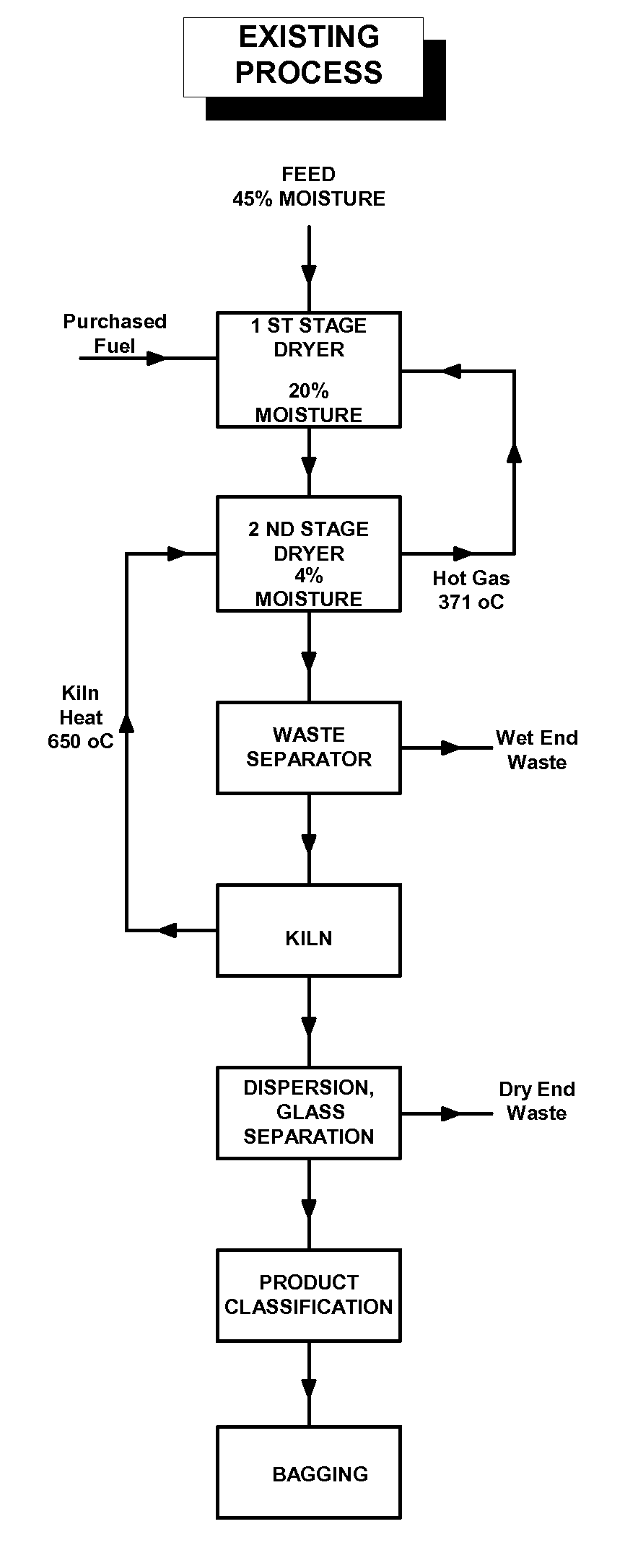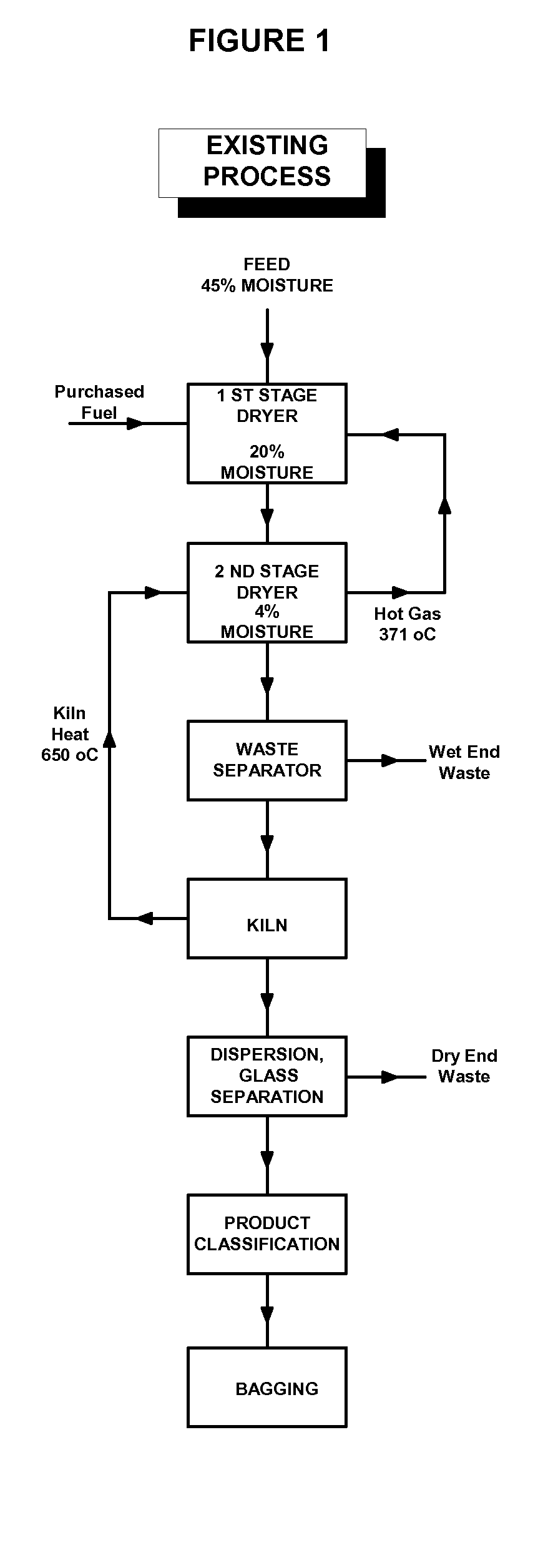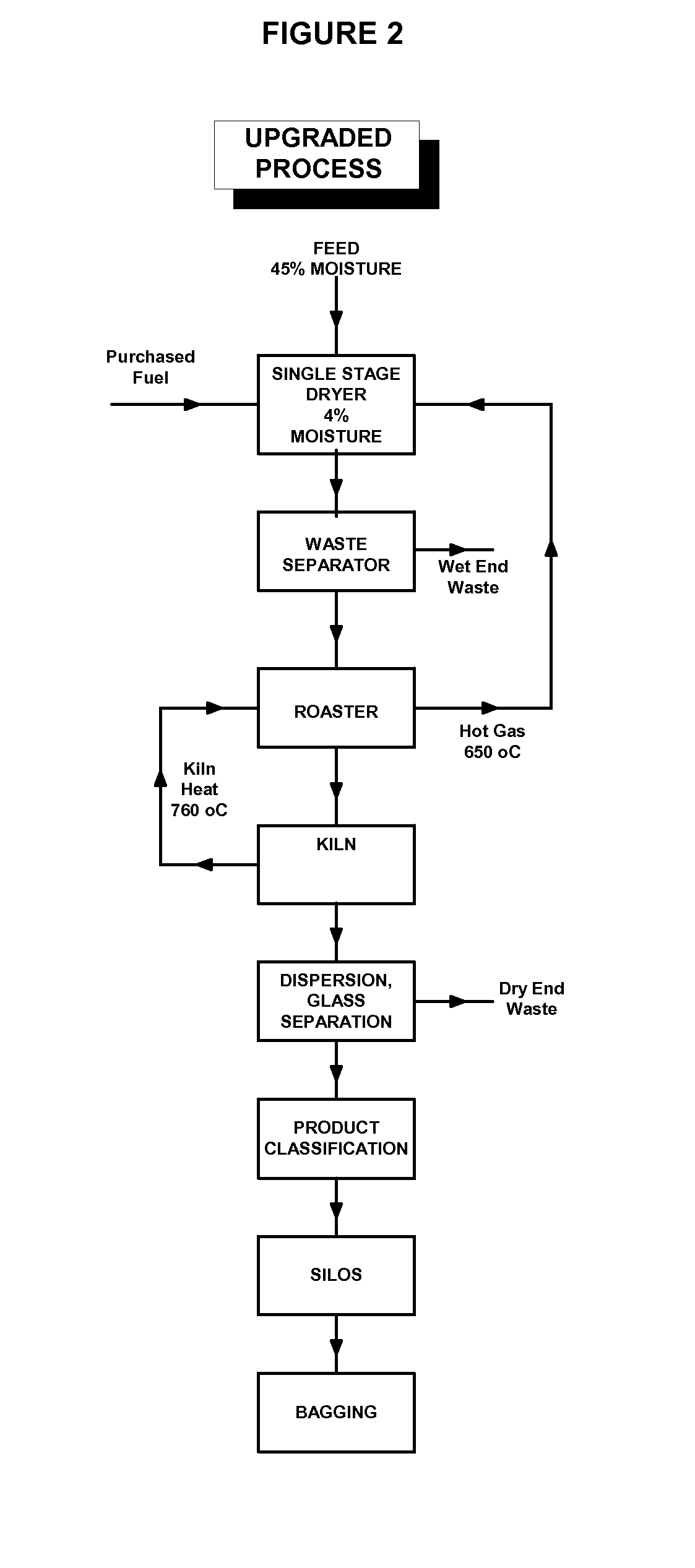Process for Roasting Diatomaceous Earth Ore to Reduce Organic Content
- Summary
- Abstract
- Description
- Claims
- Application Information
AI Technical Summary
Benefits of technology
Problems solved by technology
Method used
Image
Examples
example 1
[0047]Various samples of diatomaceous earth ore having a particle size such that 100% of the particles pass through 150 mesh, a bulk density of 10 lb / ft3, and up to 11% LOI were calcined before and after roasting the diatomite in accordance with the present disclosure. For the calcination, 5 lb of feed was added to a rotary batch calciner that had been heated up to 2000° F. by the combustion of natural gas. The sample was held inside the calciner for a period of 20 minutes as it rotated at 4 revolutions per minute. For the roasting process, the roaster reactor was heated up to 1292° F. A dried feed material was introduced to the bottom of the vessel. The roasting temperature was maintained at this level with a retention time of less than 2 minutes. The hydrocarbons in the feed material were combusted by the time it exhausted through the top of the vessel. The roasted solids were collected using a high efficiency cyclone. The BSI content of each sample was measured. The results are s...
example 2
[0049]A crude diatomaceous earth ore having a LOI value of 11.52% and a cristobalite content of 0.43% by weight was fed at a rate of 12 kg / h into a flash roasting reactor operating at 725° C. (1337° F.). The retention time of the feed in the reactor ranged from about 1 to 2 minutes. The roasted diatomite product had a LOI value of 1.67% and a cristobalite content of 0.37% by weight.
example 3
[0050]Example 2 was repeated using a feed rate of 24 kg / h and a reactor temperature of 700° C. (1292° F.). The roasted diatomite product had a LOI value of 1.91% and a cristobalite content of 0.44% by weight.
PUM
| Property | Measurement | Unit |
|---|---|---|
| Temperature | aaaaa | aaaaa |
| Temperature | aaaaa | aaaaa |
| Temperature | aaaaa | aaaaa |
Abstract
Description
Claims
Application Information
 Login to View More
Login to View More - R&D
- Intellectual Property
- Life Sciences
- Materials
- Tech Scout
- Unparalleled Data Quality
- Higher Quality Content
- 60% Fewer Hallucinations
Browse by: Latest US Patents, China's latest patents, Technical Efficacy Thesaurus, Application Domain, Technology Topic, Popular Technical Reports.
© 2025 PatSnap. All rights reserved.Legal|Privacy policy|Modern Slavery Act Transparency Statement|Sitemap|About US| Contact US: help@patsnap.com



